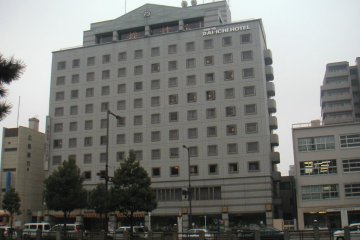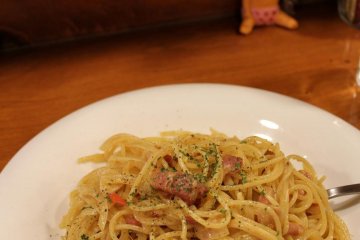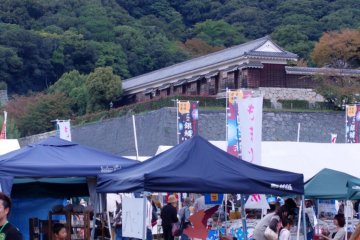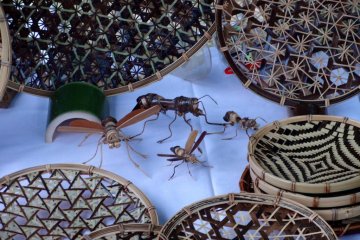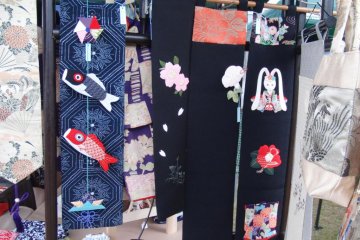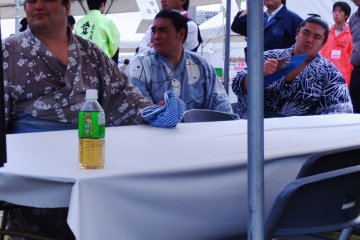In late October, I went to the Ehime Sugoimonohaku with thousands of other people. This is a three-day fair to showcase the ‘sugoi mono’ or amazing things of Ehime Prefecture and Matsuyama. It’s subtitled the Festival of Industry. As mayor Noshi of Matsuyama explained in his welcoming address, the amazing things of Ehime may not be obvious to the casual observer, but by poking around, you can find wonderfully tasty food, or amazingly well-developed technologies, or fantastic design. The goal of the Amazing Things Fair is to bring them all together in one place so that people can see for themselves what great things the prefecture has.
The fair is held in the park inside the outer moat of Matsuyama park. I arrived early in time to catch the opening drum performance and the speeches of the functionaries. Already, people were pouring into the castle grounds from all directions. Inside the park, I was amazed to see just how many tents and pavilions were packed into the space. “Sugoi!” I thought to myself. All the tents looked like an encampment besieging the castle on its hill above. With the smoke and the smell of cooking, it seemed as though the besiegers were cooking a very hearty breakfast.
The event opened with a taiko drum performance at the main stage. ‘Taiko’ means big drum, but in this case, the people of Ehime had gone to extremes. They had the biggest drum I’ve seen, a whole animal skin stretched across a huge tree trunk, with stumps of roots sticking out of it. In fact, it’s Japan’s biggest drum. “Sugoi!” Watching the show were three of Ehime’s sumo wrestlers, very big men in yukata with traditional hairstyles from the Edo period, pouring sweat in the autumn heat and trying to stay cool with folding fans. Later, they were posing for photos with fans of a different kind.
After listening to the speeches from the governor and the mayor, I made my way into the maze of stalls and tents. These were divided roughly between three categories; products for sale, take-away food, and exhibits. A lot of stalls seemed to be all three at once. Some of the merchants spoke very good English, but the majority spoke only Japanese. Nevertheless, they were very engaging, explaining their products with pride and joy, and offering samples to try. It would be hard to detail everything available, but there was a lot of fish products, sake, fruit, renewable energy and electric vehicles, which are all specialties of Ehime. I went to the fair for fun, but I also have a commercial interest in tourism and export. As soon as I got my business cards out, all the stall-keepers I spoke to were swift to tender theirs. The people of Ehime are quick to respond to a business opportunity.
During the day, the entertainments continued on the main stage. I liked the Himekyun Fruits Can, a group of 14 to 16-year old girls who represent Ehime through song and dance. Unlike many of Japan’s idol groups, these girls can actually sing, and even as an outsider, I can thoroughly enjoy their brand of regional nationalism.
If you’re in Matsuyama at the time, the Sugoimonohaku is a great opportunity to see the best of Ehime in one place. And if business is your thing, there’s no better chance to meet the merchants.



